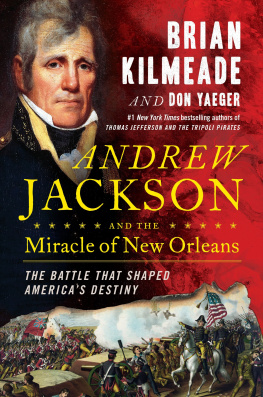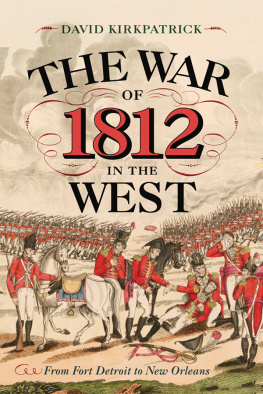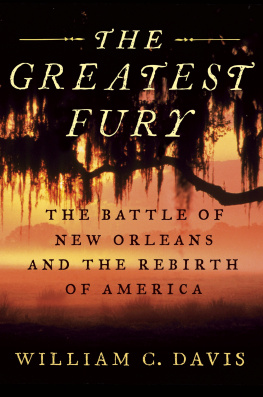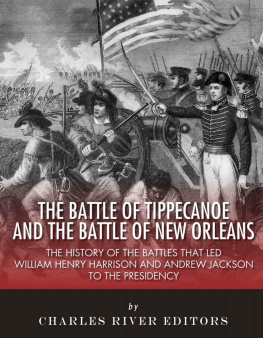PENGUIN
Published by the Penguin Group
Penguin Putnam Inc., 375 Hudson Street, New York, New York 10014, U.S.A.
Penguin Books Ltd, 27 Wrights Lane, London W8 5TZ, England
Penguin Books Australia Ltd, Ringwood, Victoria, Australia
Penguin Books Canada Ltd, 10 Alcorn Avenue, Toronto, Ontario, Canada M4V 3B2
Penguin Books (N.Z.) Ltd, 182190 Wairau Road, Auckland 10, New Zealand
Penguin Books Ltd, Registered Offices:
Harmondsworth, Middlesex, England
First published in 1999 by Penguin,
a member of Penguin Putnam Inc.
Copyright Robert V. Remini, 1999
All rights reserved
ISBN 978-1-1011-9997-8
Without limiting the rights under copyright reserved above, no part of this publication may be reproduced, stored in or introduced into a retrieval system, or transmitted, in any form or by any means (electronic, mechanical, photocopying, recording or otherwise), without the prior written permission of both the copyright owner and the above publisher of this book.
Making or distributing electronic copies of this book constitutes copyright infringement and could subject the infringer to criminal and civil liability.
Electronic edition: February 2002
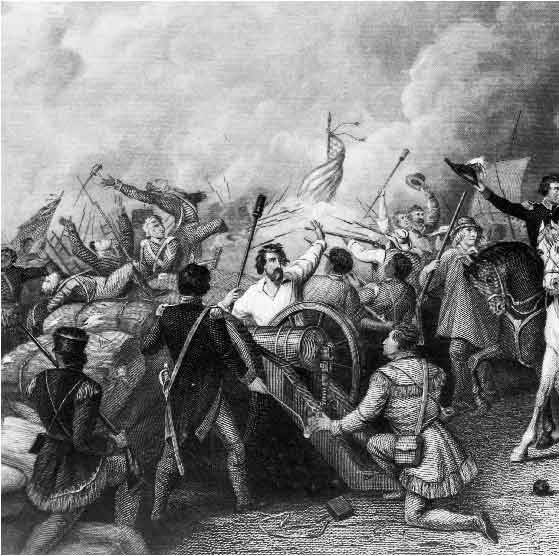
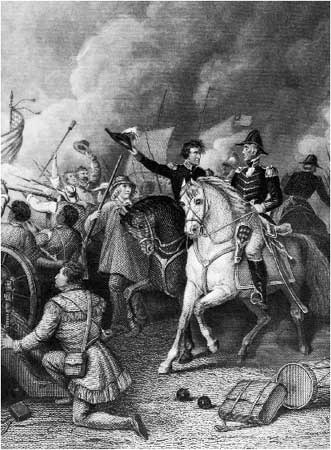

Also by Robert V. Remini
Andrew Jackson: Vol. 1
The Course of American Empire 17671821
Andrew Jackson: Vol. 2
The Course of American Freedom 182232
Andrew Jackson: Vol. 3
The Course of American Democracy 183345
Daniel Webster: The Man and His Time
Henry Clay: Statesman for the Union
The Election of Andrew Jackson
Andrew Jackson and the Bank War
Martin Van Buren and the Making of the Democratic Party

For Joan Marie Costello,
Beloved Daughter

Preface

There was a time when the United States had heroes and reveled in them. There was a time when Andrew Jackson was one of those heroes, along with the men and women who stood with him at New Orleans and drove an invading British army back into the sea.
The purpose of this book is an attempt to recount one extraordinary event in the nations past that produced not only a stupendous military victory that helped define the country but a towering hero who became a symbol of what was best in American society. It is an attempt to explain the reasons that produced this phenomenon, and why the victory was so important at the time.
In the past I have had occasion to write extensively about the Battle of New Orleans, but this effort was sharply focused on Andrew Jackson. Then Wendy Wolf, an editor at Viking, invited me to broaden my perspective and write a work that would go beyond the limitations of a single biography and include the vast numbers of men and women who in one way or another contributed to the outcome of that conflict. I am very grateful to her. The invitation allowed me to rethink the event and delve more deeply into certain aspects of it that had larger and more national significance. In the process I found an extraordinary degree of heroism demonstrated by all its participants, both the invaders and the defenders. For the first time I came to admire the sheer pluck, determination, and endurance of the British sailors and soldiers who were forced to endure incredible hardships. They were ordered into what can only be described as mass slaughter and yet they did not hesitate to face it bravely and resolutely.
The Americans, too, responded to the challenge of the invasion of their homeland in a manner that exceeded expectations. A population of many ethnic and racial backgrounds who frequently quarreled with one another put aside their differences and joined together to save their city and safeguard their liberty. Their heroic deed and accomplishment proved to many that a union of people had at last taken place in this country. The Battle convinced them that a republican society which rewarded individual effort, not class or heredity, could and would survive.
Robert V. Remini
Wilmette, Illinois

Chronology

1812
June
United States declares war against Great Britain.
1813
August 30
Massacre at Fort Mims and entrance of United States in Creek War.
October Jackson leads troops against Creeks.
1814
March 27
Jackson defeats Creeks at Battle of Horseshoe Bend.
May
British attempt to recruit Indian and Spanish allies for an invasion of the United States from the Gulf.
August
British invade Chesapeake Bay, capture Washington, and burn the Capitol, the White House, and other public buildings.
August
U.S. and British peace envoys meet in Ghent, Belgium, and begin negotiations.
August
British attempt and fail to recruit Baratarian pirates.
August 22
Jackson occupies Mobile and garrisons Fort Bowyer.
September 6
British invade United States from Canada.
September 15
Jackson repulses British attack at Mobile.
October 4
British fleet sails from Chesapeake to Jamaica.
October 25
Jackson begins invasion of Florida.
November
British army and navy rendezvous in Jamaica.
November 7
Jackson captures Pensacola.
November 9
Jackson evacuates Pensacola and returns to Mobile.
November 22
Jackson departs Mobile for New Orleans.
November 26 British fleet and army sail for New Orleans.
December 1
Jackson arrives in New Orleans.
December 12
British sighted off Lake Borgne.
December 14
British defeat American gunboats.
December 16
British begin landing troops on Pea Island.
December 16
Jackson imposes martial law in New Orleans.
December 22
British land troops at Bayou Bienvenu.
December 23
British occupy Viller plantation.
December 23
Jackson forms his line at Lacostes plantation and halts British invasion with night attack.
December 24
Jackson withdraws his army to the Rodriguez Canal between the Macarty and Chalmette plantations, and British complete ferrying of troops from Pea Island to Viller plantation.
December 24
American and British commissioners in Ghent, Belgium, sign Treaty of Peace.
December 25 General Pakenham assumes command of British forces.
December 27
British sink USS Carolina.
December 28
Jackson repulses British advance toward New Orleans.
1815
January 1
Artillery duel.
January 8
British defeated at New Orleans.
February 16
Senate ratifies Treaty of Peace.
Next page





